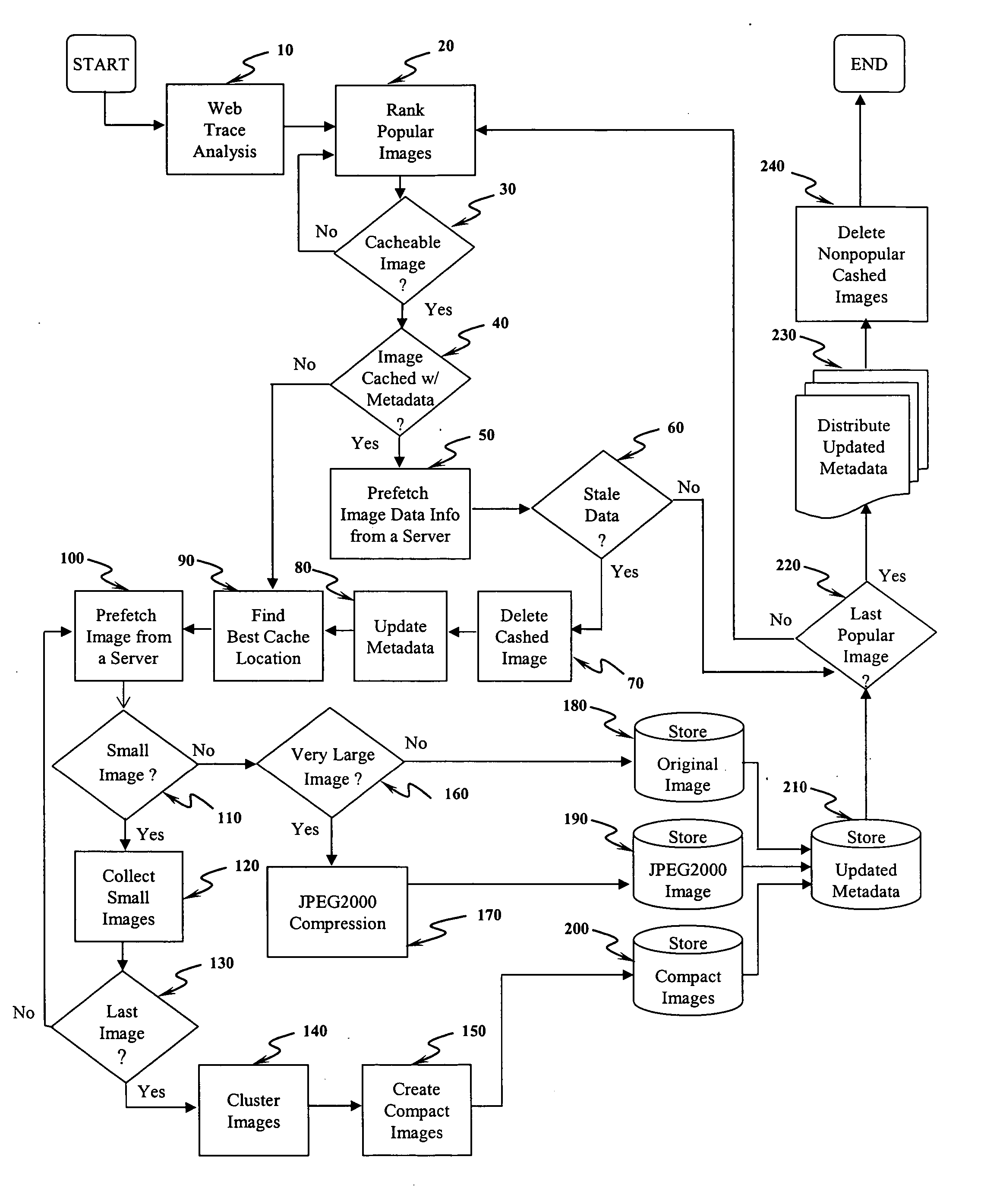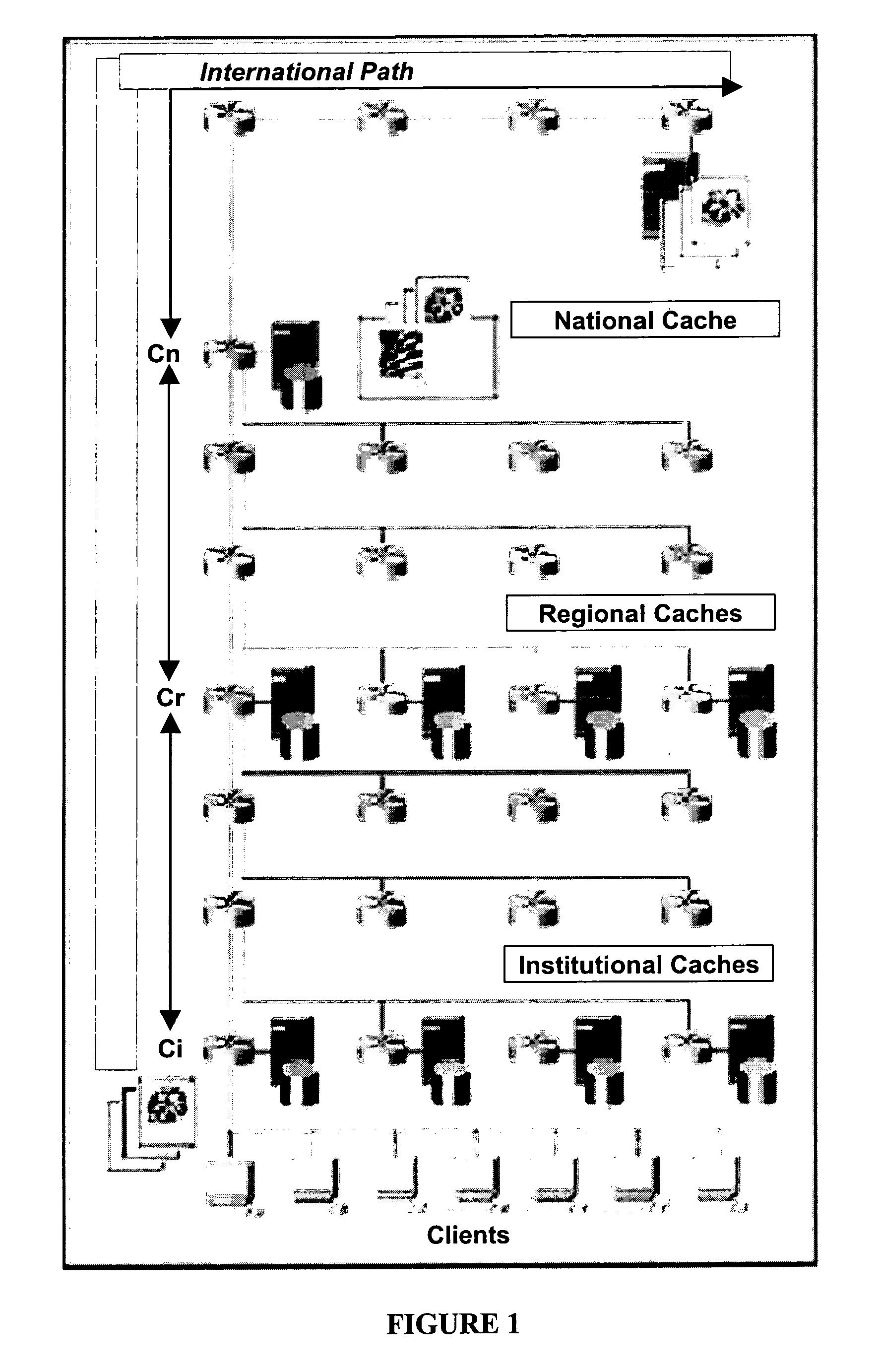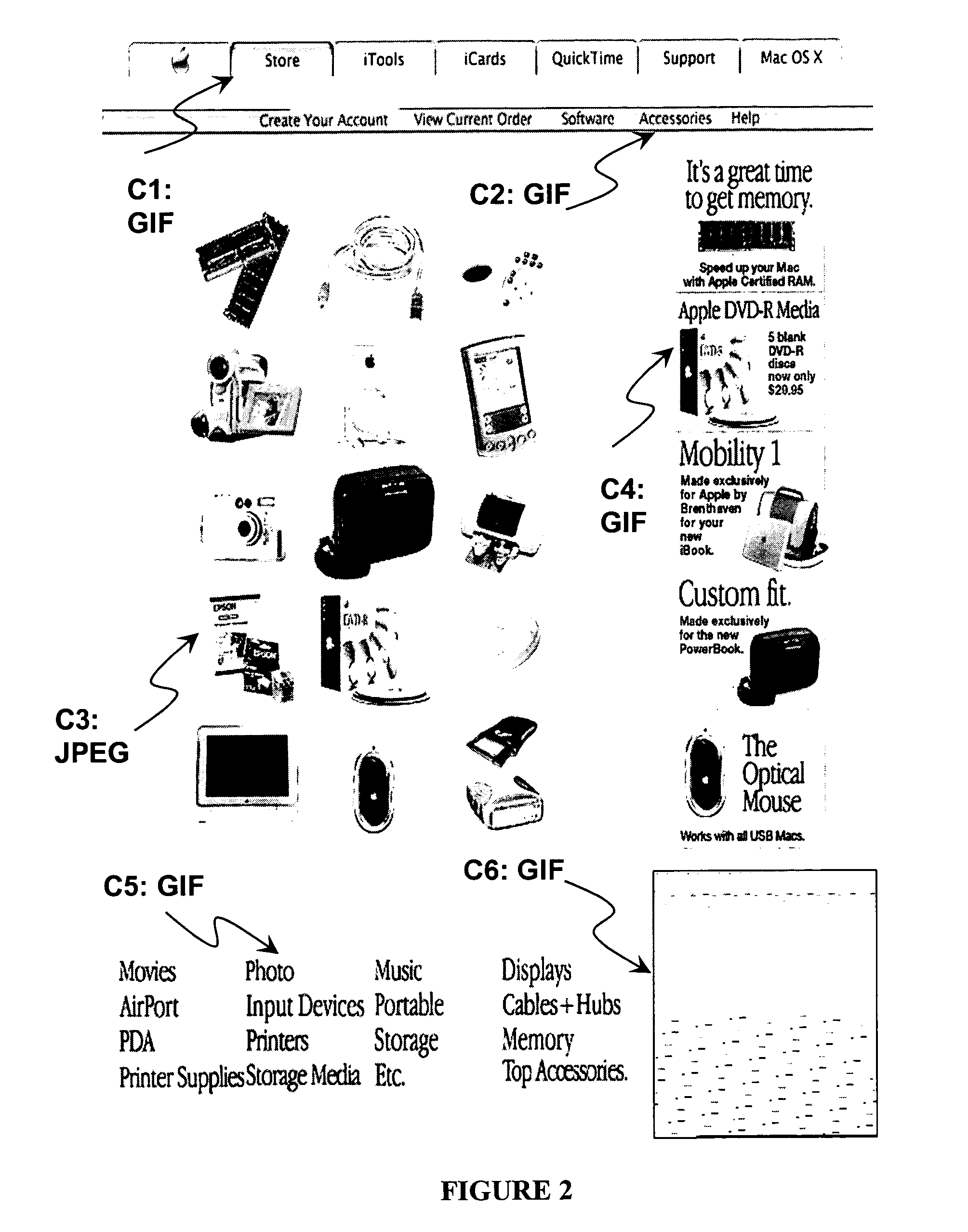Method for efficient image distribution and management
a distribution and management method, applied in the field can solve the problem of inefficient storage of images on web pages, and achieve the effect of efficient image distribution and management, convenient updating of compact clustered images, and convenient replacemen
- Summary
- Abstract
- Description
- Claims
- Application Information
AI Technical Summary
Benefits of technology
Problems solved by technology
Method used
Image
Examples
example 1
[0068] Calculate packets and transmission delay times to transfer 1 MB (1,048,576 bytes) data in TCP / IP networks for different packet size (MTU=1500 bytes and 576 bytes) over a T1 line using the above formula:
[0069] The number of packets to transfer 1 MB data: [0070] MTU=1500 bytes, N1=1,048,576 / 1460=718.2=719 (packets). [0071] MTU=576 bytes, N2=1,048,576 / 536=1956.3=1,957 (packets).
[0072] Transmission delay times per hop for a packet: [0073] MTU=1500 bytes, λ1=(1460+40)*8 / 1,544,000=7.772 ms / packet delay per hop [0074] MTU=576 bytes, λ2=(536+40)*8 / 1,544,000=2.924 ms / packet delay per hop. [0075] where T1 bandwidth=1,544,000 bits / s, TCP header=20 bytes, and IP header=20 bytes.
[0076] Transmission delay times per hop for 1 MB data: [0077] MTU=1500 bytes, Λ1=N1λ1=(719)(7.772)=5,588 (ms)=5.588 (s) [0078] MTU=576 bytes, λ2=N2λ2=(1,957)(2.924)=5,722 (ms)=5.722 (s)
[0079] TCP / IP Packet Header size for 1 MB data: [0080] MTU=1500 bytes, H1=N1(40bytes)=(719)(40)=28,760 (bytes) [0081] MTU=576 ...
PUM
 Login to View More
Login to View More Abstract
Description
Claims
Application Information
 Login to View More
Login to View More - R&D
- Intellectual Property
- Life Sciences
- Materials
- Tech Scout
- Unparalleled Data Quality
- Higher Quality Content
- 60% Fewer Hallucinations
Browse by: Latest US Patents, China's latest patents, Technical Efficacy Thesaurus, Application Domain, Technology Topic, Popular Technical Reports.
© 2025 PatSnap. All rights reserved.Legal|Privacy policy|Modern Slavery Act Transparency Statement|Sitemap|About US| Contact US: help@patsnap.com



